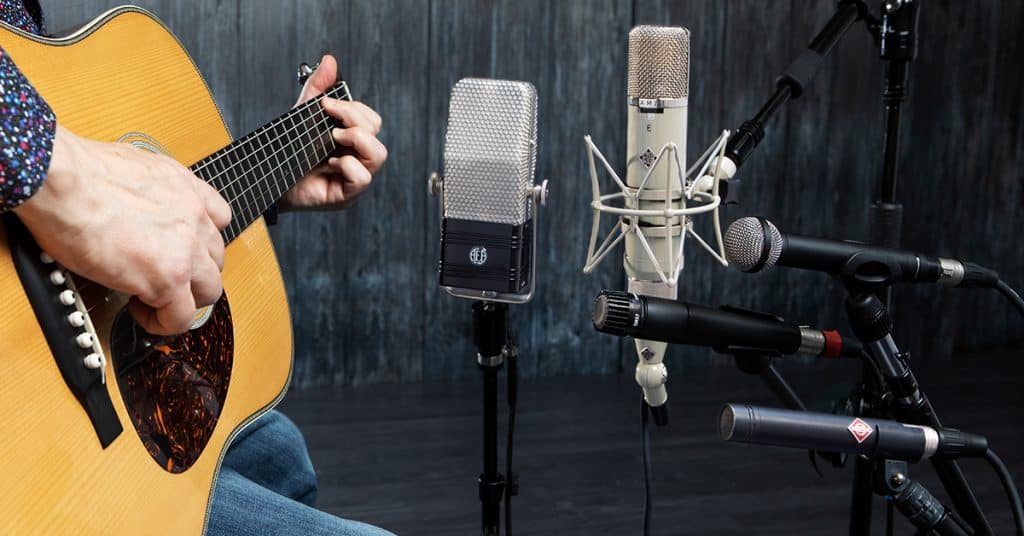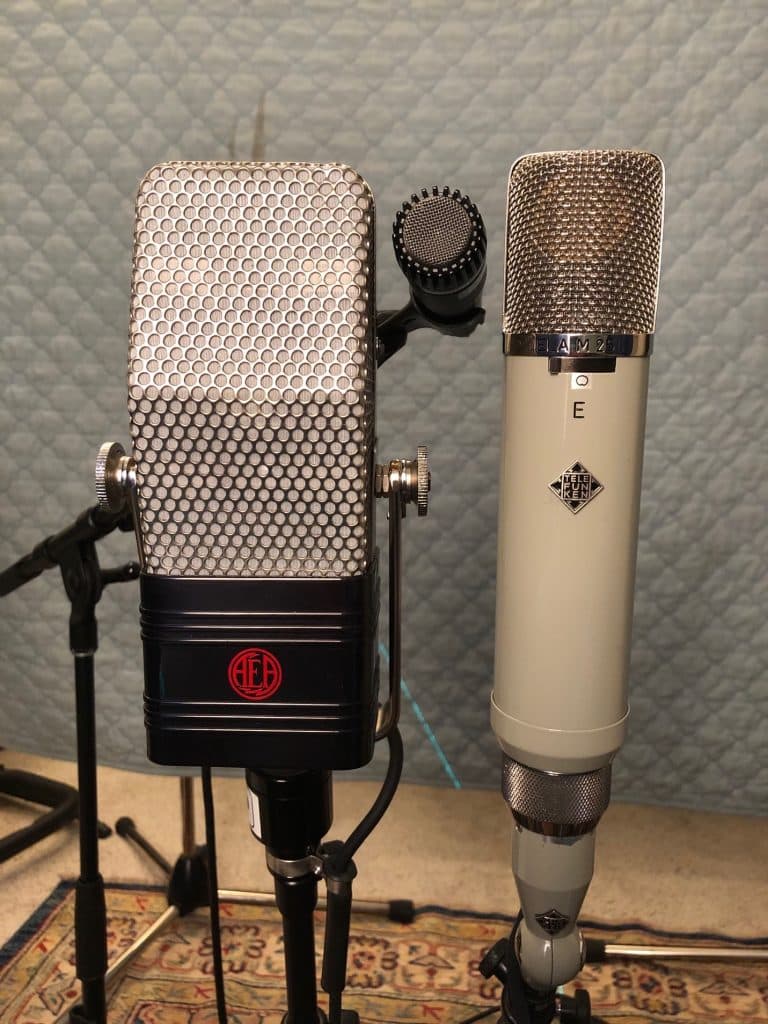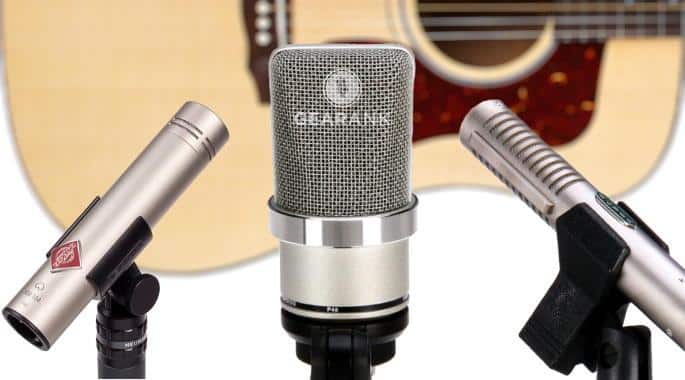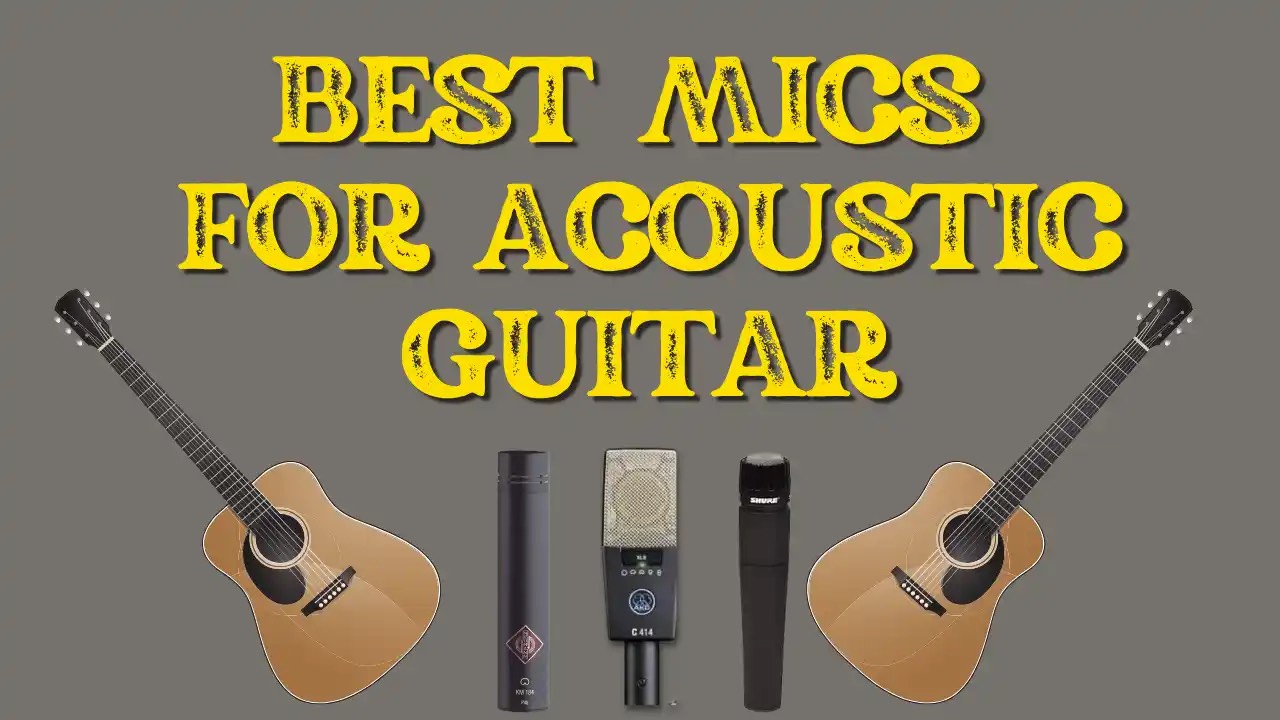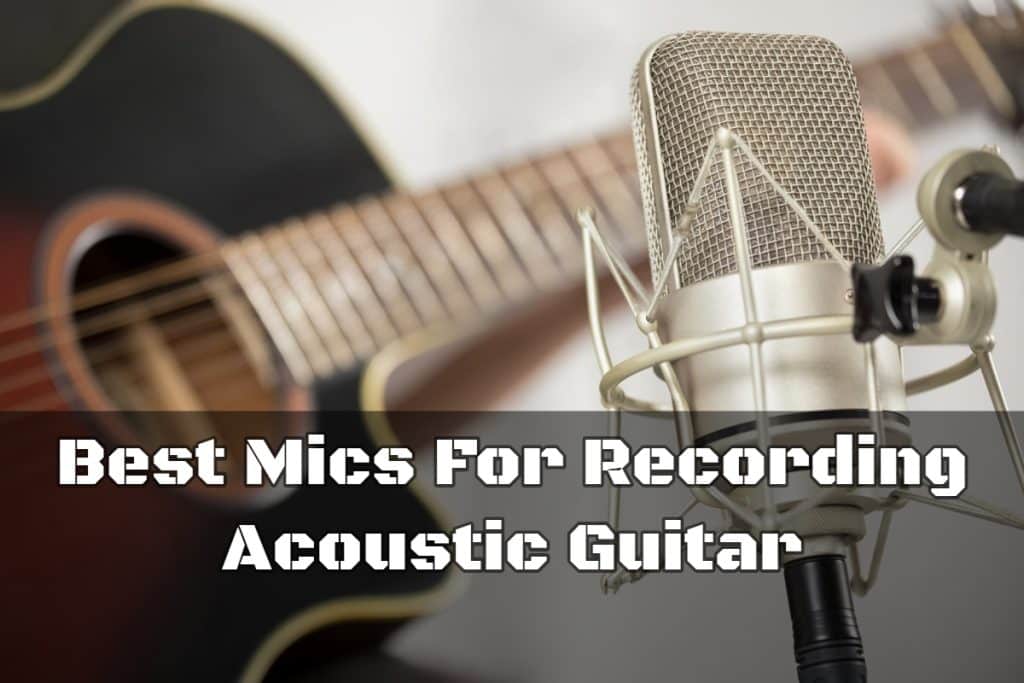Are you a musician looking to capture the pure, unfiltered beauty of your acoustic guitar? Look no further, because this article is here to guide you towards selecting the best microphone that will enhance your guitar’s natural tone. From condenser to dynamic microphones, we’ll explore all the options available, including their pros and cons, to ensure that you find the perfect match for your acoustic guitar. So, whether you’re a seasoned player or just starting out, get ready to take your guitar playing to the next level with the ultimate guide to choosing the best microphone for acoustic guitar.
Types of Microphones
Dynamic Microphones
Dynamic microphones are a popular choice for recording and performing with acoustic guitars. These microphones use a coil and magnet to create electrical signals from sound waves. They are rugged and able to handle high sound pressure levels, making them great for capturing the full range of an acoustic guitar’s sound. Dynamic microphones are also versatile and can be used in a variety of settings, from the stage to the studio.
Condenser Microphones
Condenser microphones are known for their ability to capture detailed and accurate sound. They use a diaphragm and a capacitor to convert sound waves into electrical signals. Condenser microphones are highly sensitive, making them perfect for capturing the nuances and subtleties of acoustic guitar playing. They are commonly used in professional recording studios to achieve a pristine and natural acoustic guitar sound.
Ribbon Microphones
Ribbon microphones are a classic choice for recording acoustic guitars. They use a thin ribbon of metal suspended between magnets to capture sound. Ribbon microphones have a smooth and warm sound quality, which can enhance the natural warmth of an acoustic guitar. They are also known for their excellent transient response, making them great for capturing fast and detailed acoustic guitar playing.
Polar Patterns
Cardioid
The cardioid polar pattern is the most common polar pattern used in microphones. It is named after its heart-shaped pickup pattern, which focuses on sound sources directly in front of the microphone while rejecting sound from the sides and rear. Cardioid microphones are ideal for recording acoustic guitars as they allow you to capture the direct sound of the guitar while minimizing unwanted background noise.
Omni-Directional
Omni-directional microphones pick up sound equally from all directions. They are not as commonly used for recording acoustic guitars, as they tend to capture more ambient noise and room reflections. However, they can be useful in certain situations where you want to capture a more open and natural sound.
Figure-8
Figure-8, or bi-directional, microphones pick up sound equally from the front and back while rejecting sound from the sides. They are often used in stereo recording setups, where two microphones are placed in a figure-8 pattern to capture the sound of an acoustic guitar in a more immersive and three-dimensional way.
Frequency Response
Flat Response
Microphones with a flat frequency response reproduce sound accurately and without any added coloration. They capture the full frequency range of the acoustic guitar with equal emphasis on all frequencies. This can be desirable if you want a clean and transparent sound that faithfully represents the natural tone of the guitar.
Boosted High-Frequency Response
Some microphones have a boosted high-frequency response, which adds sparkle and brightness to the sound of the acoustic guitar. This can be beneficial if you want to enhance the clarity and definition of the guitar’s high-frequency range, making it stand out in a mix or live performance.
Boosted Low-Frequency Response
Microphones with a boosted low-frequency response emphasize the lower frequencies of the acoustic guitar, adding warmth and depth to the sound. This can be useful if you want to achieve a more full-bodied and rich tone, especially when recording in a dry or acoustically untreated environment.
Sensitivity
Low Sensitivity
Microphones with low sensitivity require higher input levels to produce a usable signal. They are less prone to picking up background noise, making them suitable for recording acoustic guitars in noisy environments. However, they may require more gain from a preamp or audio interface to achieve an optimal recording level.
Medium Sensitivity
Microphones with medium sensitivity offer a good balance between capturing detail and avoiding unwanted noise. They are versatile and can handle a wide range of recording situations, making them a popular choice for acoustic guitar recording.
High Sensitivity
High-sensitivity microphones are extremely sensitive to sound and can capture even the tiniest nuances of an acoustic guitar’s sound. They are ideal for capturing subtle details and delicate playing techniques. However, they may also pick up more background noise, so it’s important to consider the recording environment when using a high-sensitivity microphone.
Budget Considerations
Entry-Level Microphones
Entry-level microphones are a great option for beginners or those on a tight budget. These microphones provide decent sound quality and performance at an affordable price. While they may not offer the same level of detail and accuracy as higher-end options, they are still capable of recording acoustic guitars with satisfactory results. Some popular entry-level microphone choices include the Shure SM58 and Audio-Technica AT2020.
Mid-Range Microphones
Mid-range microphones strike a balance between performance and cost. They offer better sound quality and durability compared to entry-level options, making them suitable for more serious recording and performing. In this price range, you will find microphones like the Rode NT1 and AKG C214, which provide excellent value for money and are often used by both amateur and professional musicians.
High-End Microphones
High-end microphones are the cream of the crop when it comes to sound quality and performance. They are designed for professional recording studios and demanding audio applications. These microphones deliver exceptional detail, clarity, and accuracy, allowing you to capture every nuance of your acoustic guitar’s sound. Popular high-end options include the Neumann U87 and the Sennheiser MKH 8000 series.
Durability and Build Quality
Metal Construction
Microphones with metal construction are generally more durable and able to withstand the rigors of regular use. They offer better protection against accidental drops and bumps, making them ideal for live performances and touring musicians. Metal-bodied microphones like the Shure SM57 and Electro-Voice RE20 are known for their ruggedness and longevity.
Shock Mounts
Shock mounts are accessories that help isolate the microphone from vibrations and handling noise. They are particularly useful when recording acoustic guitars, as they can help minimize unwanted rumble and mechanical noises. Microphones that come with their own shock mount, such as the Audio-Technica AT2020, offer added convenience and improved audio quality.
Pop Filters
Pop filters are essential for recording vocals and can also be helpful when recording acoustic guitars. They help reduce plosive sounds, such as “p” and “b” sounds, which can cause unpleasant popping noises in recordings. Pop filters can improve the overall clarity and intelligibility of your acoustic guitar recordings, resulting in a more professional sound. Standalone pop filters or microphones that come with built-in pop filters, like the Blue Yeti, are both effective options.
Connection Types
XLR
XLR is a balanced audio connection commonly used in professional audio applications. XLR microphones offer a reliable and interference-free connection, making them a popular choice for recording studios and live sound setups. They require a compatible audio interface or mixing console with XLR inputs to connect to a computer or PA system. XLR microphones provide superior audio quality and signal integrity.
USB
USB microphones are plug-and-play devices that connect directly to a computer or mobile device via a USB port. They are convenient and easy to use, especially for home recording or podcasting. USB microphones eliminate the need for an additional audio interface, as they have built-in preamps and analog-to-digital converters. While they may not offer the same level of audio quality as XLR microphones, they are a practical option for beginners or those on a budget.
Wireless
Wireless microphones provide the freedom to move around while performing or recording. They transmit audio signals wirelessly to a receiver, which is connected to an audio interface or mixing console. Wireless microphones are commonly used in live sound setups and are especially useful for acoustic guitar players who want to move fluidly on stage without being tied down by cables. It’s important to choose a reliable and interference-free wireless system to ensure the best audio quality and performance.
Usage and Environment
Home Studio Recording
For home studio recording, a versatile microphone that captures the natural sound of an acoustic guitar is essential. Consider factors such as room acoustics, ambient noise, and the desired sound you want to achieve. Condenser microphones are often the top choice, as they offer excellent sound quality and detail. Pairing a condenser microphone with a shock mount and pop filter can further enhance the quality of your home studio recordings.
Live Performances
When performing live with an acoustic guitar, durability and feedback rejection become important factors to consider. Dynamic microphones are reliable and can handle high sound pressure levels, making them suitable for live performances. Cardioid polar pattern microphones are ideal for minimizing feedback and capturing the direct sound of the guitar. Look for microphones with metal construction and consider using a shock mount to further reduce handling noise.
Outdoor Environment
Recording or performing in outdoor environments presents unique challenges. The primary concern is handling background noise and wind interference. Dynamic microphones are often the best choice for combating these issues. Their design and ruggedness make them more resistant to wind noise and environmental elements. Additionally, consider using a windshield or windscreen to further reduce wind noise when recording or performing outdoors.
Accessories
Microphone Stands
Microphone stands provide stability and support for your microphone during recording or performances. They come in various styles, including tripod stands and boom stands. Tripod stands are versatile and can be adjustable in height and angle, making them suitable for different recording setups. Boom stands, on the other hand, allow for precise positioning and can extend the reach of the microphone, particularly useful when recording acoustic guitars in a seated position.
Boom Arms
Boom arms are accessories that attach to microphone stands and provide additional flexibility for positioning the microphone. They can be extended horizontally or vertically, allowing you to adjust the distance and angle of the microphone. Boom arms are especially useful for capturing different tones and textures when recording acoustic guitars, as they provide easy access to various parts of the instrument.
Mic Clips
Mic clips are essential for securely attaching the microphone to a microphone stand or boom arm. They come in different sizes to accommodate different microphone diameters. It’s important to choose a mic clip that fits your microphone snugly and holds it firmly in place to prevent any accidental movements or drops. Mic clips with adjustable angles can also be helpful in achieving the optimal microphone position for acoustic guitar recording.
Product Recommendations
Now that you have a better understanding of the different types of microphones, polar patterns, frequency response, sensitivity, budget considerations, durability, and usage, it’s time to explore some product recommendations. Keep in mind that personal preferences, individual acoustic guitar characteristics, and the specific requirements of your recording or performing setup may influence your final decision. Consult trusted reviews, try out different options if possible, and consider seeking advice from professionals in the field to ensure the best microphone choice for your acoustic guitar.
- Entry-Level: Shure SM58, Audio-Technica AT2020
- Mid-Range: Rode NT1, AKG C214
- High-End: Neumann U87, Sennheiser MKH 8000 series
Remember, finding the best microphone for your acoustic guitar may require some experimentation and trial and error. Take your time, listen critically, and trust your ears to make the right choice in capturing the beauty and nuances of your instrument. Happy recording and performing!

